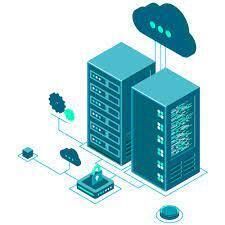As artificial intelligence, machine learning, and high-end graphics processing continue to evolve, the demand for specialized computing infrastructure grows. A GPU dedicated server offers the computational power required for complex data tasks that traditional CPU-based servers often struggle with. Unlike shared resources, these servers are designed to deliver consistent performance for high-throughput applications.
The architecture of a GPU dedicated server differs significantly from standard configurations. These servers are built with one or more Graphics Processing Units (GPUs), designed for parallel processing. This makes them well-suited for operations such as deep learning model training, 3D rendering, and scientific simulations. GPUs accelerate these processes by handling multiple operations simultaneously—something CPUs aren't optimized to do at scale.
Industries adopting AI and machine learning are increasingly reliant on these systems. For example, in natural language processing, the training of large language models requires immense processing capabilities. Similarly, data scientists working on image recognition or autonomous driving datasets benefit from the speed and efficiency of GPU-focused infrastructure. This trend is not limited to large tech firms; smaller research teams and startups also depend on dedicated servers with GPU capacity to test and iterate models faster.
Another area seeing a shift toward GPU-centric processing is video rendering and animation. Studios producing CGI-heavy content, visual effects, or virtual reality environments need real-time processing speeds to maintain productivity and output quality. Here, GPU servers help cut down render times dramatically compared to CPU-only systems.
Scientific fields like genomics, weather modeling, and quantum simulations also benefit from GPU-based setups. The ability to run multiple simulations or process petabytes of data in a shorter time frame is a game-changer for research timelines.
Security and control are other advantages. Because a GPU dedicated server is not shared with others, users have full access and authority over the environment. This helps in deploying custom software stacks, managing large datasets securely, and ensuring that performance remains unaffected by neighboring applications.
As demand grows for real-time analytics, AI-driven automation, and high-quality rendering, GPU infrastructure is becoming less of an optional upgrade and more of a necessary tool for many enterprises and developers. While cloud-based GPU services offer flexibility, organizations seeking stable, consistent, and isolated performance often turn to dedicated setups for long-term efficiency and control.
Choosing the right gpu dedicated server depends on workload type, memory requirements, and expansion capabilities. As data-driven operations become more complex, relying on hardware that can scale with those needs becomes vital. For high-performance computing tasks, the future points strongly in favor of the gpu dedicated server.




Top comments (0)